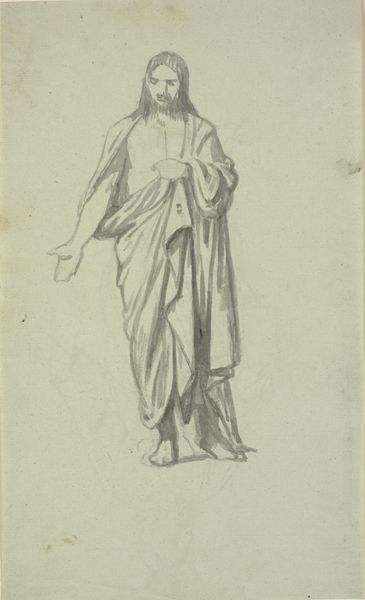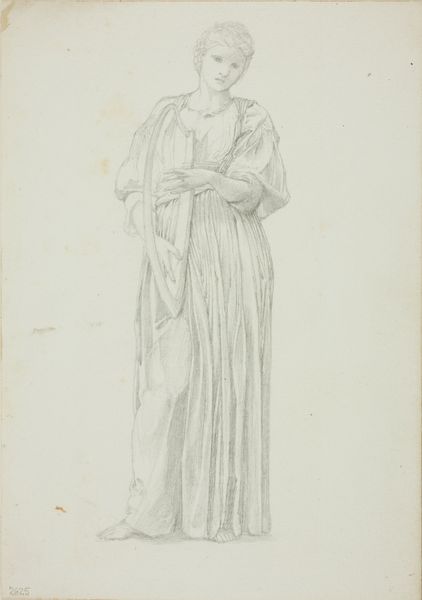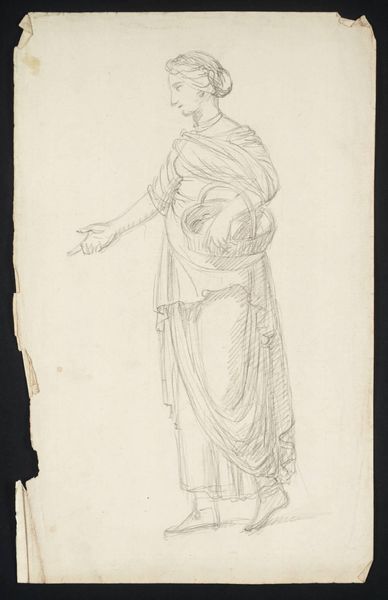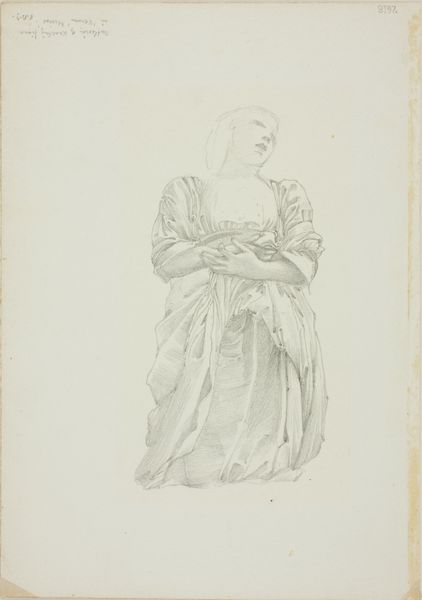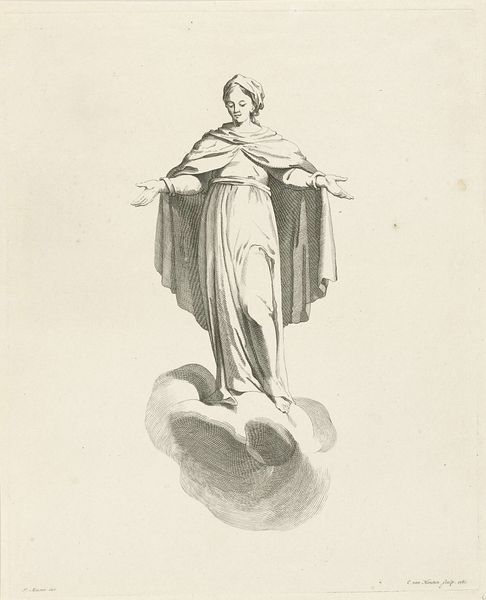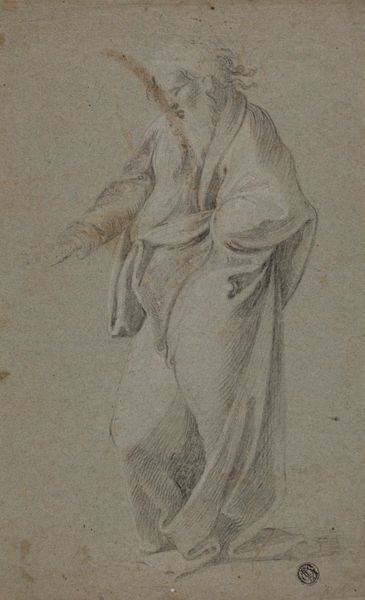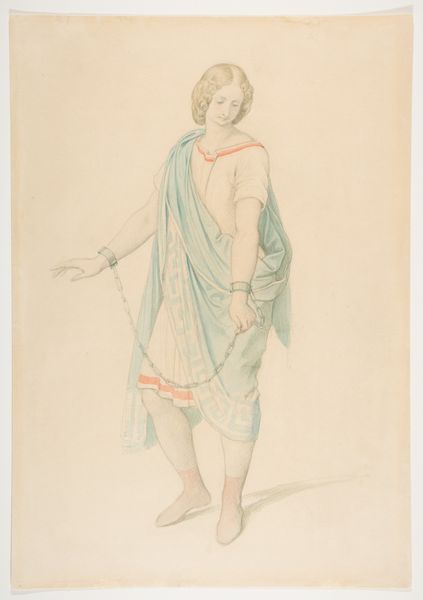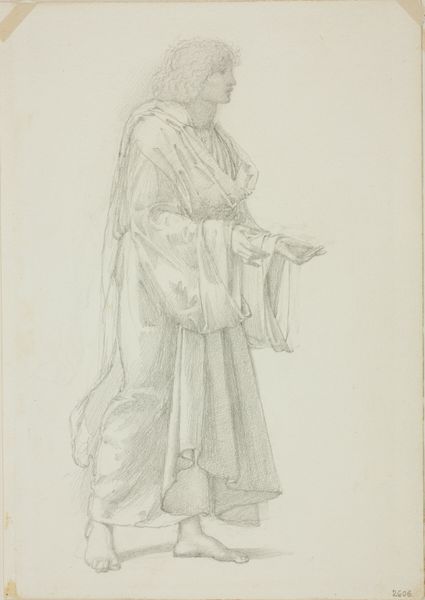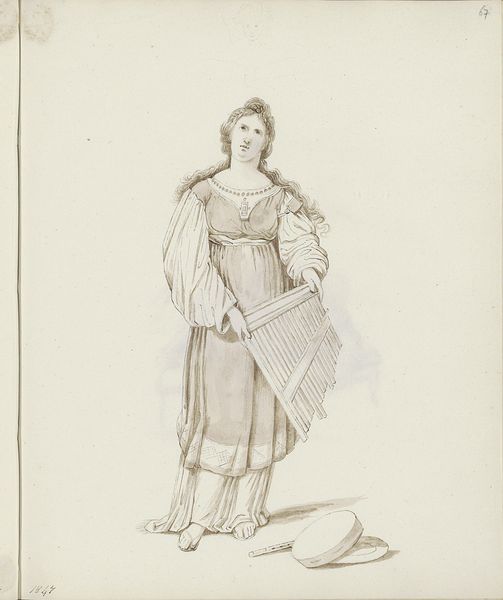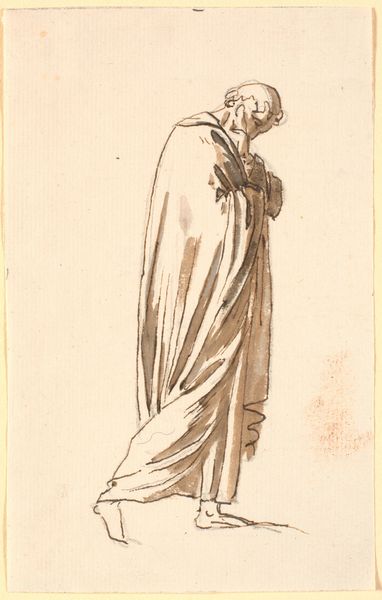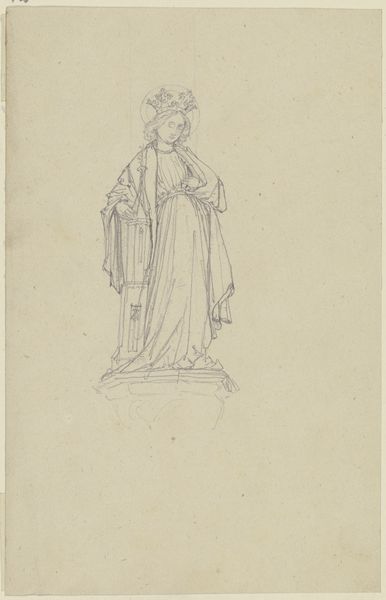
Study for Figure of 'Idleness - The Romaunt of the Rose c. 1873 - 1877
0:00
0:00
Dimensions: 253 × 178 mm
Copyright: Public Domain
Editor: This is "Study for Figure of 'Idleness - The Romaunt of the Rose'," a pencil and graphite drawing on paper by Edward Burne-Jones, created around 1873 to 1877. The figure's loose robes give it an ethereal quality. What do you make of its Pre-Raphaelite style and historical context? Curator: It’s a fascinating glimpse into Victorian anxieties, isn't it? The Pre-Raphaelites were deeply engaged with reinterpreting the past, and Burne-Jones here evokes medieval romance, but also taps into debates around industrial labor and social responsibility. What does "idleness" represent here? Is it simple leisure, or something more politically charged, perhaps a commentary on class and the purpose of work? Editor: That’s interesting, the idea of it being politically charged. I was so caught up in the flowing lines that I hadn't really considered that aspect. Curator: Think about the rise of the Aesthetic movement, advocating “art for art’s sake.” How did this challenge prevailing Victorian morality? And how did institutions like the Art Institute of Chicago shape the public understanding and appreciation of such art? They weren’t just displaying art, they were crafting a specific cultural narrative. Editor: So the choice of exhibiting "Idleness" reflects a certain embrace, or at least a negotiation, of those challenges to Victorian values within established institutions? Curator: Exactly. The placement of such art in the public sphere tells us a lot about changing social attitudes. It wasn't merely about aesthetics; it was a declaration. Editor: This makes me reconsider the drawing, understanding its historical presence and placement provides it with more social layers than initially thought. Curator: And that interplay between artistic expression and social context is key to understanding art's enduring power and how museum display influences it.
Comments
No comments
Be the first to comment and join the conversation on the ultimate creative platform.

